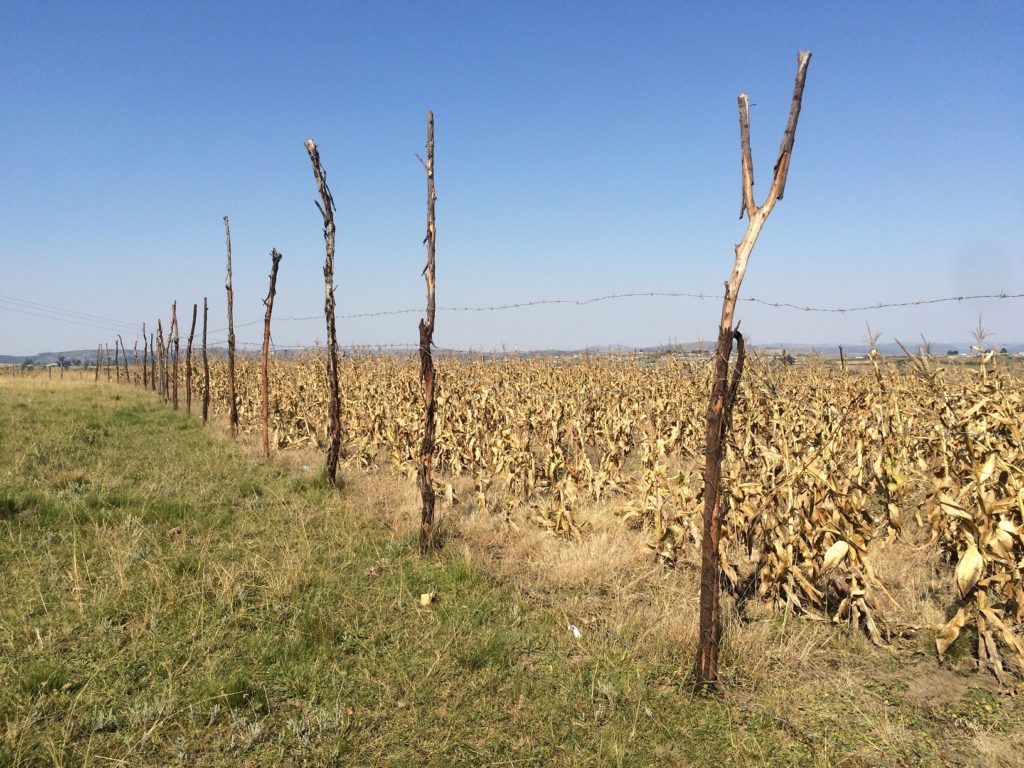In recent years, rural people have increasingly abandoned agriculture. This trend, often referred to as deagrarianisation in academic debate, occurs in both smallholder contexts and industrial farming. However, the abandonment of farming has the clearest negative effects on rural food security and livelihoods in the smallholder farms of the Global South.
On May 5, 2020 SIANI and the South Africa Sweden University Forum (SASUF) co-hosted a webinar about deagrarianisation where experienced researchers from Europe and South Africa presented, discussed and compared agricultural trends in South Africa with those of Sweden, Hungary and Ukraine. The webinar attracted an audience of 100 people and generated lively discussions between participants and presenters.
Today, farmers across the world experience increased competition, high costs of inputs and low price at farm gates. In the face of the increasing pressure on agriculture, farmers react differently. Large commercial farmers often see upscaling as the only viable option for remaining competitive.
As a result, South Africa’s large commercial farms as well as European farms are becoming fewer and larger, when more competitive farms purchase or lease the land of less competitive neighbours.
Cecilia Waldenström describes here how this general trend has played out in three regions in Sweden. In the south of the country with the best agricultural lands there was a clear trend of upscaling and increased mechanization. In more marginal areas with lower quality agricultural land and longer distances to markets farmers employed strategies of low input -low output production, similar to what is seen in many smallholder contexts in the Global South. Cecilia also pointed out the lack of availability of agricultural education and advisory services in marginal regions, a trend seen equally in the Global South.
Brian Kuns and Ildikó Aztalos Morell presented research from two post-communist contexts in Eastern Europe. Under the soviet authoritarian regime, land was commonly allocated in large field areas outside of the villages, while most households also had a plot in the village for subsistence. There are clear similarities between this land allocation and the top-down instituted reorganization of fields into communal areas outside villages and the homelands during apartheid in South Africa.
In Hungary and Ukraine the landscape creates by the soviet authoritarian regime has facilitated elite capture and large-scale investments. In the Ukraine smallholders today lease out their plots for small sums of money to food processing oligarchs and foreign investors and this has led Ukraine to host some of the largest commercial farming operations in the world.
In South Africa such investments are rare, and instead, there is widespread abandonment of fields in communal areas as described in some detail during the webinar by Professor Sheona Shackleton.
Most of smallholders in South Africa as well as in Ukraine, testify that it is difficult to work on the communal fields individually. These areas are far away from their house and it takes time to get there, so it is difficult to tend to the field. Lack of capital is also a major barrier for investing in machinery, fencing and inputs.
While Ukrainian farmers make a profit from their farms by leasing the land to a large landowner, it is important to remember that today’s industrial farms employ very few people, which has been contributing to joblessness and rural poverty.
David Neves and Flora Hajdu described the increasing importance of the South African welfare system, with child grants and pensions, for reducing vulnerability and food insecurity in the face of deagrarianisation and increasing joblessness.
Several of the presenters pointed out how the general trend of deagrarianisation does not mean that farming is no longer important for rural people. Also, there are countertendencies to the general trend. In Sweden and across Europe, contestations of the industrialization and upscaling of farming are emerging in slow food movements, local farmers’ markets and efforts to preserve traditional crop varieties, where farmers capitalize on other values than quantity and price.
Paul Hebinck provided examples where South African smallholders had decided to continue to farm their fields, or re-open them, and how they take pride in maintaining their agricultural lifestyles, local varieties of seed and livestock.
The presenters also noted that both in South Africa and Ukraine many people have homegardens, growing their food, even when they abandon field farming. Thus, abandonment of distant fields isn’t the same as the abandonment of farming.
Flora Hajdu also described how the small money from welfare payments could be important for being able to reinvest in intensifying household gardening and the local sale of vegetables.
Despite the general trend of deagrarianisation, the seminar showed that it does not equal to abandoning of agriculture – farming will remain an important livelihood strategy for those living in rural areas and with access to land, although it will not always be managed in the same way as in the past.
This post is written by Klara Fischer (SLU), a researcher at SLU. Her research concerns how smallholders’ adopt and adapt new technologies and practices, the relationship between smallholders’ practices and agricultural policy and advice and broader societal discourses on agriculture development and natural resource management.
